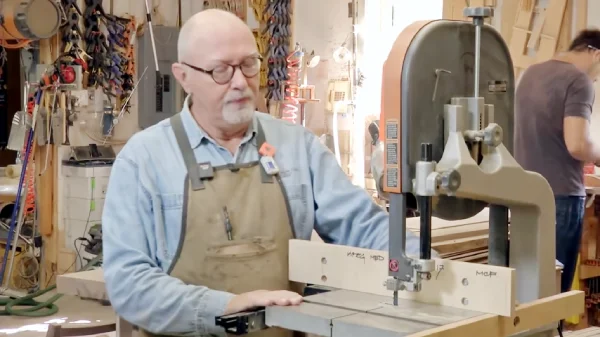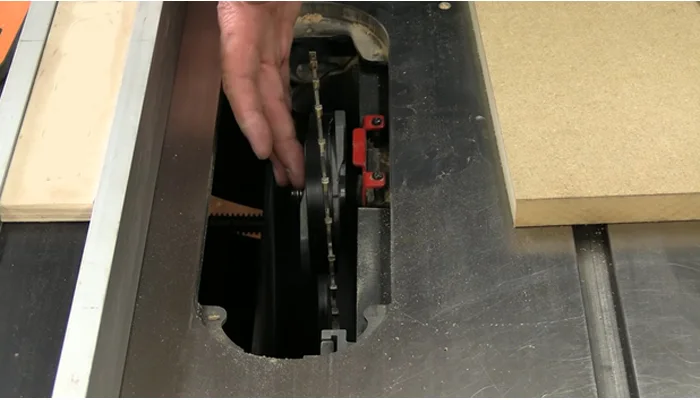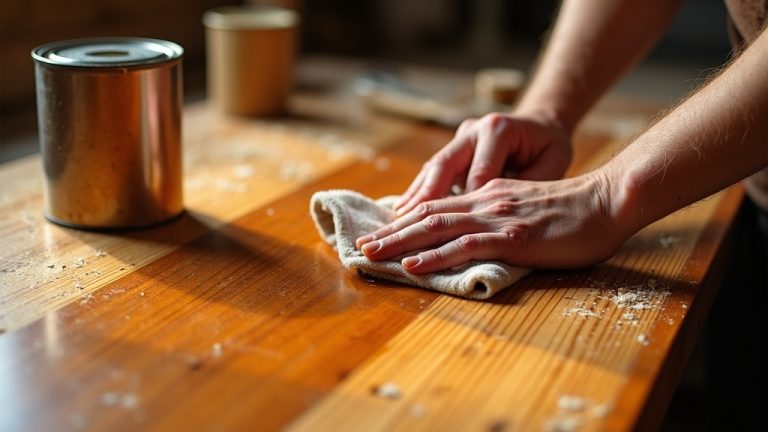Should You Wear Gloves When Using a Bandsaw: 4 Key Reasons to Avoid
Using a bandsaw requires utmost caution, and proper safety measures are paramount. As gloves are considered to be a form of protection for hands for any mechanical or other hazardous work, it’s natural to think of wearing them when you work with a bandsaw.
But should you wear gloves when using a bandsaw for your safety and protection? I researched this topic and came across several reasons why wearing gloves is not recommended when working with a bandsaw.
The primary rationale behind this precaution is the false sense of security that gloves can impart, potentially diminishing your awareness of your hands’ exposed and vulnerable nature.
I will explore the dangers of wearing gloves when operating a bandsaw so you can understand why it’s not advisable to wear them while working with this powerful tool.
4 Reasons Why You Should Avoid Wearing Gloves When Using a Bandsaw

In my research, I found four compelling reasons why avoiding the use of gloves is crucial when operating a bandsaw, such as:
- Reduced awareness of hand position
- Risk of hand entrapment
- Reduced grip and control
- Decreased precision and accuracy
1. Reduced Awareness of Hand Position
Wearing gloves while using a bandsaw compromises tactile awareness, hindering your ability to locate and control the position of your hands accurately.
The bulkiness of the gloves reduces your sense of touch, making it difficult to feel the exact placement of your fingers and the pressure applied. This lack of awareness increases the risk of accidental contact with the bandsaw blade, leading to serious injuries.
Moreover, the importance of optimal hand position becomes even more critical when quarter-sawing a log with a bandsaw or engaging in any intricate cutting task. Gloves, despite their intended protection, may provide a false sense of security that could lead to potential hazards in such precise operations.
Therefore, avoiding gloves when using a bandsaw is crucial to ensure not only optimal hand position awareness but also enhanced safety during specialized cutting tasks.
2. Risk of Hand Entrapment
Another peril I’ve identified when wearing gloves is that they heighten the risk of my hand getting entangled in the blade if accidental contact occurs. The toughness of gloves can cause them to become entangled in the blade, potentially pulling your hand into harm’s way.
Besides the blade’s sharpness, gloves also pose a risk of entanglement with other moving parts of the machinery. Loose-fitting gloves can get caught in the guides, wheels, or other components, creating additional hazards beyond the immediate cutting area.
To ensure your safety, it’s advised to avoid wearing gloves when operating a bandsaw.
3. Reduced Grip and Control

Gloves can actually reduce your ability to securely hold onto the workpiece, increasing the risk of slips or loss of control. The added layer of the glove can diminish your tactile sensitivity, making it more difficult to feel the material and make precise adjustments.
Without gloves, your bare hands can directly interact with the workpiece, allowing you to gauge its position better and respond accordingly. This enhanced grip and control is essential for operating a bandsaw safely and effectively.
4. Decreased Precision and Accuracy
Wearing gloves can significantly compromise your precision and accuracy when operating a bandsaw. Bandsaw operations require precise control and manipulation of the workpiece, and gloves can hinder your fine motor skills.
Wearing gloves can make handling smaller or intricate pieces challenging, increasing the risk of misalignment and accidents during the cutting process. The added material layer can reduce your sensitivity and tactile feedback, making it difficult to gauge the exact pressure and positioning needed for accurate cuts.
If your hands are not in direct contact with the workpiece, you may struggle to maintain the level of precision required for intricate cuts. Therefore, to ensure optimal precision and accuracy, it is recommended that you avoid wearing gloves when using a bandsaw.
What is the most common cause of injury with a bandsaw?
In light of my findings, unintentional contact with the blade during material feeding is the most frequent cause of bandsaw injuries.
The implications of this sort of accidental contact underscore the importance of strictly observing safety guidelines, positioning your body correctly, and exercising caution at all times to minimize the risk of injury.
When using a bandsaw, exercising diligence and adhering to established safety measures is critical to guarantee safe operations.
How can you protect your fingers when using a band saw?

One effective way to safeguard your fingers when using a bandsaw is by using a push stick with proper body positioning. Holding the stock firmly and ensuring it remains flat on the table is crucial to prevent any turning that could draw your fingers towards the blade.
When removing cut pieces between the fence and saw blade, or when your hands are near the blade, using a push stick can minimize the risk of potential injuries. By pushing the stock through the blade using the push stick, you keep your hands safe from the blade.
This precaution, along with maintaining proper body positioning, contributes to a safer bandsaw operation and reduces the likelihood of finger injuries.
How far should you keep your hand from the bandsaw while using it?
To ensure your safety while operating a bandsaw, maintain a minimum distance of two inches between your hand and the blade at all times. This distance is crucial to protect your hands and fingers from potential injuries. Keeping a safe distance reduces the risk of accidental contact with the blade, which can result in severe cuts or amputations.
Additionally, it’s important to avoid forcing the workpiece through the cut. Allow the material to feed smoothly, and if you encounter any resistance or a jam, immediately turn off the bandsaw and back the material away from the incomplete cut.
Adopt Safe Practices When Using a Bandsaw
You are now well-informed about the potential risks associated with wearing gloves when using a bandsaw. The information that I have shared with you highlights the importance of prioritizing safety over a false sense of protection that gloves may provide.
By avoiding gloves, you enhance your awareness, reduce the risk of hand entrapment, maintain better grip and control, and ensure the precision required for intricate cuts.
Your safety is paramount, and practicing caution, adhering to safety guidelines, and keeping a safe distance from the bandsaw blade are key to a secure woodworking environment. Stay safe and enjoy your work with the bandsaw.







